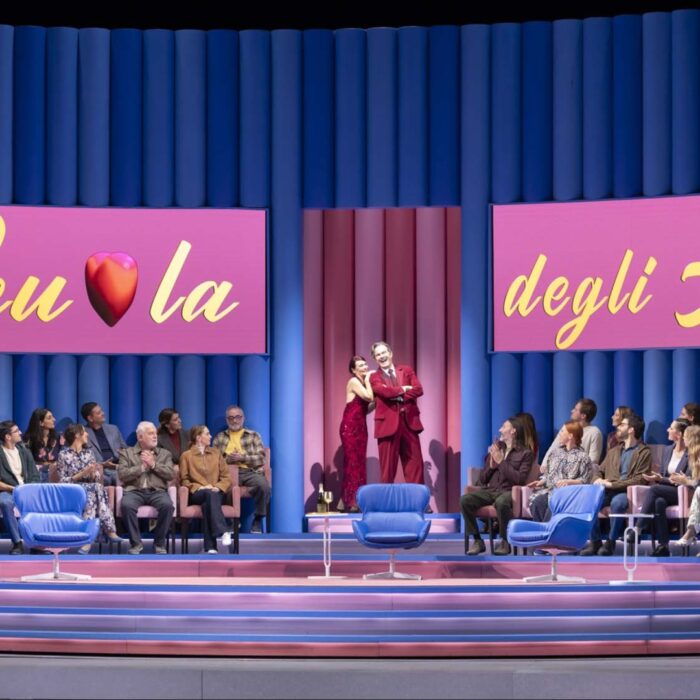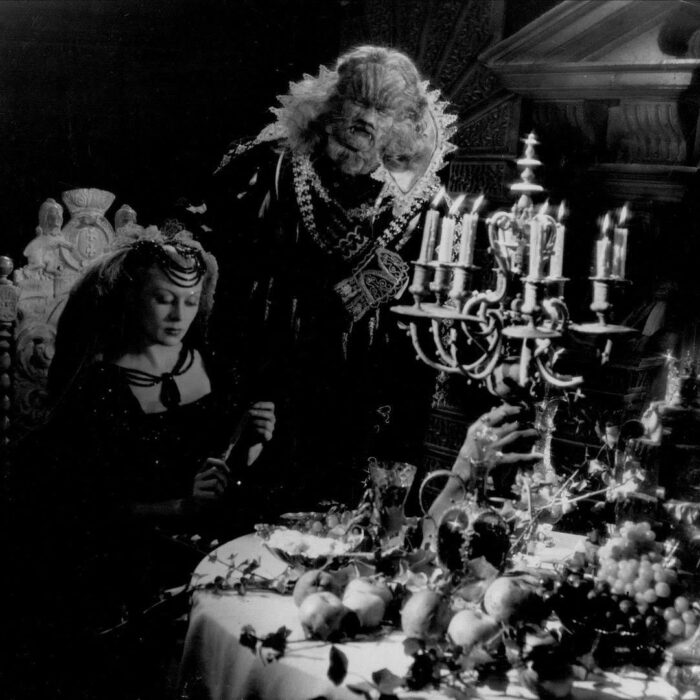
Barbican 2022 Review: An Anatomy of Melancholy
Soul-searching Dowland from Netia Jones and Iestyn Davies
By Benjamin Poore(Credit: © Cordula Treml)
“An Anatomy of Melancholy” is a new 75-minute show from countertenor Iestyn Davies and lutenist Thomas Dunford, designed and directed by Netia Jones. Its title comes from Robert Burton’s famous seventeenth-century treatise on the various varieties of despair and mania that make up what now wears the guise of depression and anxiety.
The musical thread connecting thread is spun by John Dowland, the great Renaissance weaver of gloom and despondency (though also a certain acidic playfulness). His songs provide a sounding board for various thinkers on melancholia, readings from whom inter-cut the songs: Burton himself, Sigmund Freud, and psychoanalyst Darian Leader, whose 2009 book “The New Black” is an important contemporary exploration of the relationship between psychic disturbance, concepts of mental health, and political life.
The action takes place in the Barbican Centre’s subterranean Pit theater, the audience seated in the round gazing upon a central square; Davies lies prone on the floor, insensible, as the audience file in, while recordings of Burton et al. drift from the speakers. Blackout follows, and from the gloom drifts the scattered opening notes of ‘In Darkness Let me Dwell’, Davies full of poised anguish; the lights – by Stevie Porter – come up slowly as the song’s grief begins to bloom. It is such an effective – affective – gesture that Jones uses it to close the show – the rest of which offers something frustratingly uneven.
The central square is populated with austere glass cabinets, packed with plants and test tubes of luminous blue liquid and bottles of pills. We could be in the office of a university science department, its depressed denizen working late. Davies sits fitfully at a desk with a laptop, takeaway coffee cups, and piles of books – Burton, Leader, Freud. Sometimes Davies sings from the floor; at another point, he counts out his tranquillizers as he ekes out another beautiful Dowland lament; video footage, redolent of Bill Viola, shows Davies underwater as if drowning in his tears, pace Dowland.
Commentary between songs comes in the form of recordings, which are stiflingly and inexplicably also dropped into the second verses of some songs, obliterating the fragile beauty of Davies and Dunford’s exquisite partnership. The discrete amplification of Davies’ voice gives it both an unearthly quality and uncanny intimacy; the bare bones of a narrative seem to be that Davies is restlessly seeking his own cure.
The clinical setup channels some key ideas: the intermingling of scientific and humanist inquiry inherent in both Burton and Freud’s projects. So too does it marshal Darian Leader’s complementary critique of the over-medicalization of depression and anxiety, which is seen as an infection to be treated with antibiotics rather than a sickness of the soul, with the pot plants clashing with the scientific paraphernalia; a grid, like a graph paper, is projected over the screens and floor early on.
This infusion of humanist warmth comes from Dowland’s music, which in Davies and Dunford’s hands is like a gently flickering flame in an air pump, struggling to stay alight. Though their musical partnership is absolutely secure they never interact, which provides another simple expression of the alienation in the songs and supplementary subject matter.
Unlike Jones’ staging of another song sequence at the Barbican – Hans Zender’s semi-staged orchestral version of “Winterreise” in 2015 with Ian Bostridge (another artist renowned in their repertoire) – there is little sense of narrative journey, relying on mood instead. The aimless feel saps focus and doesn’t square with the liveliness and immediacy of Dowland’s music. The repeated return of recorded text turns a striking presentation of song into a seminar. The ebb-and-flow of Dowland’s songs offer plenty of emotional variety but there is little sense of direction; the point, perhaps, given the deadening drift of depressive states. But in ending up back where it began it is a rather unyielding and static experience for the audience.
Musically Davies and Dunford take care of everything. It might suit future iterations of the production for him to do even less and let the design and video do what other talking is necessary. The opening word of ‘Flow my tears’ displayed Davies’ expressive inventiveness, the vowel opening with raw pain, before the rest of the phrase closes and drapes the sound in funereal silk. Faltering melismatic phrases are like an exquisite wound. The abrupt secco ending at the reprise of ‘In Darkness let me dwell’ was precision-engineered for maximum affective impact. Thought-provoking, at times moving, but the whole package doesn’t quite convince.


